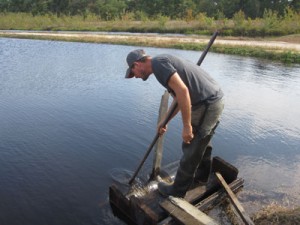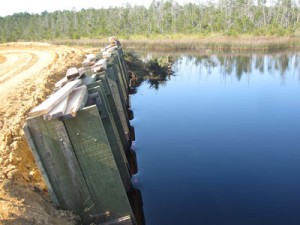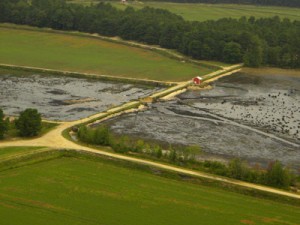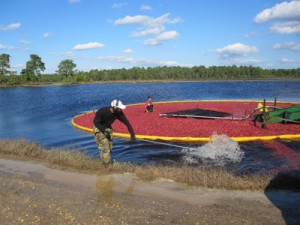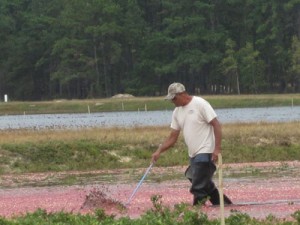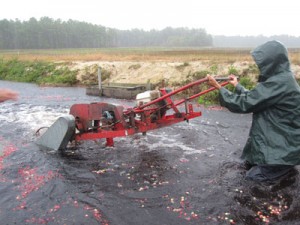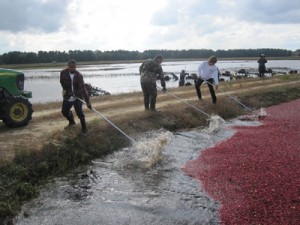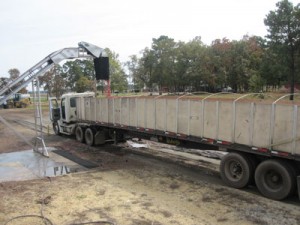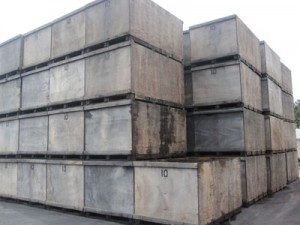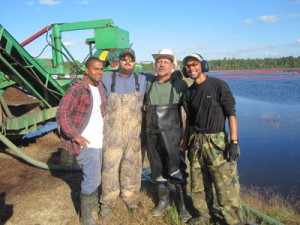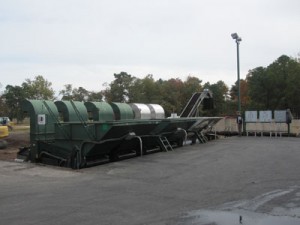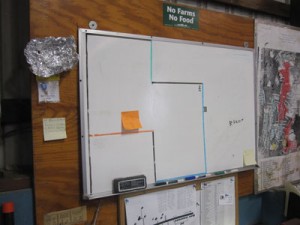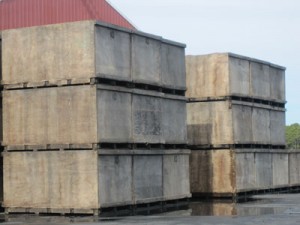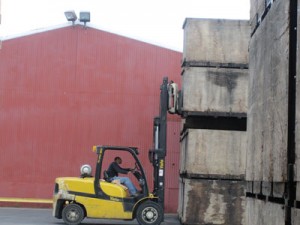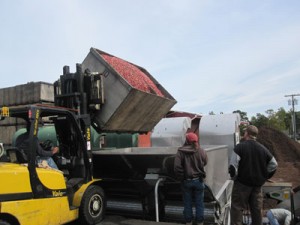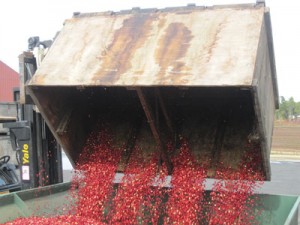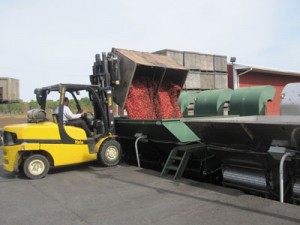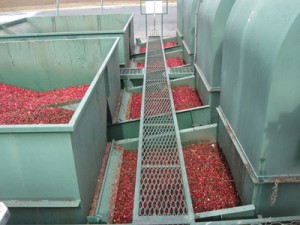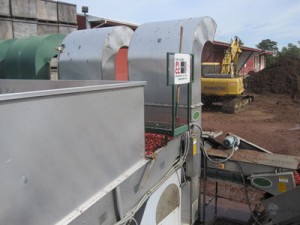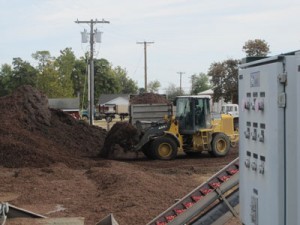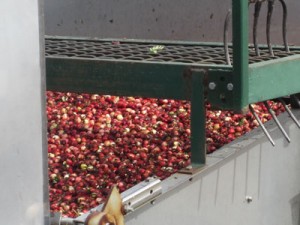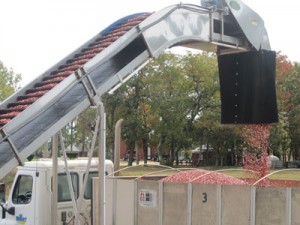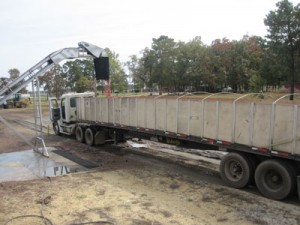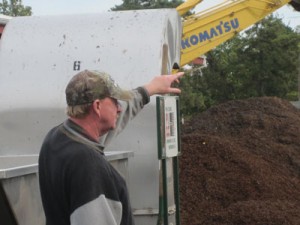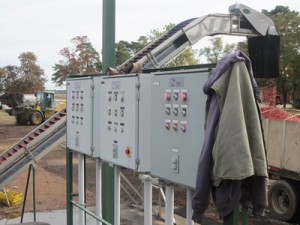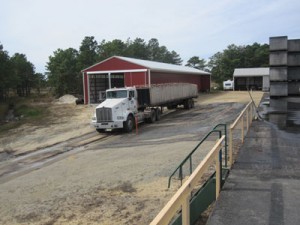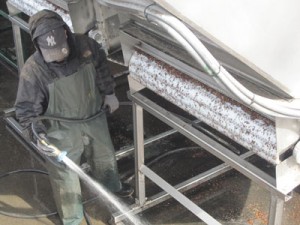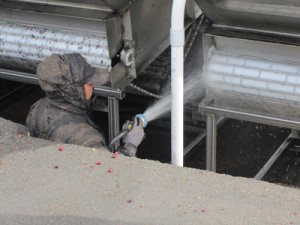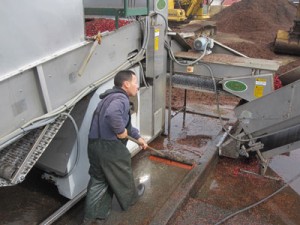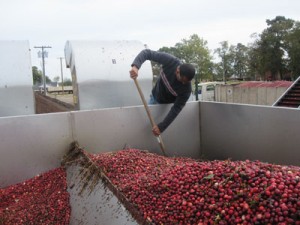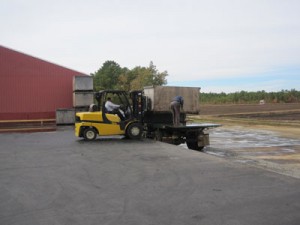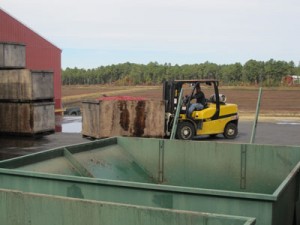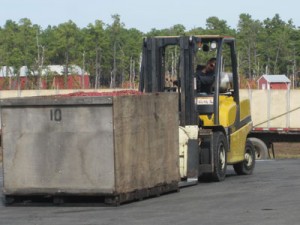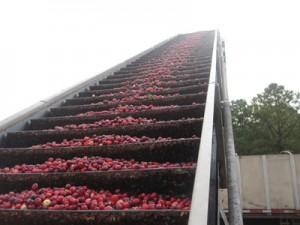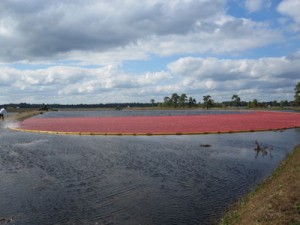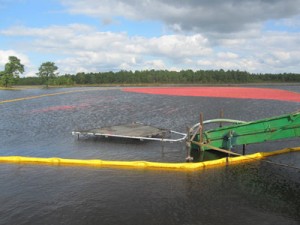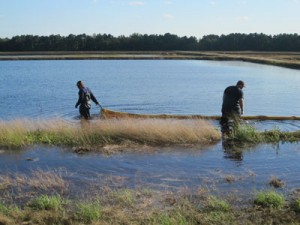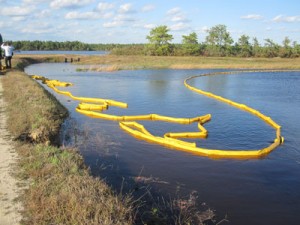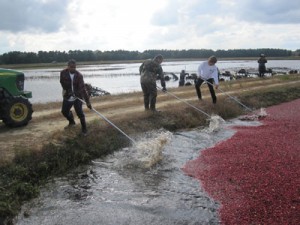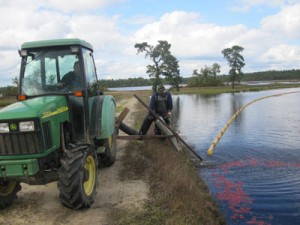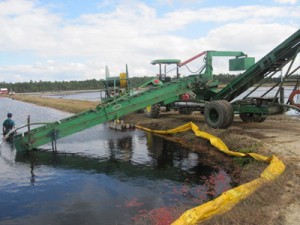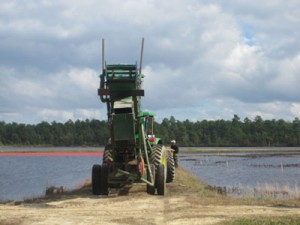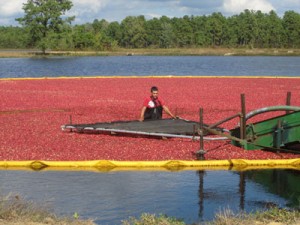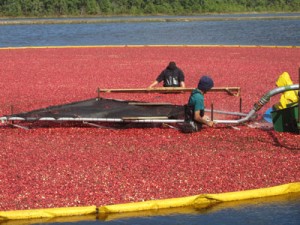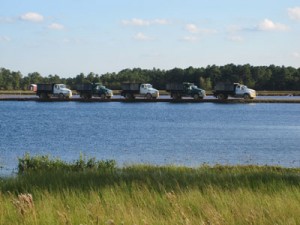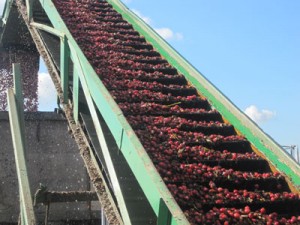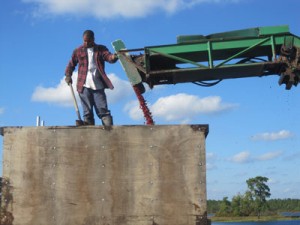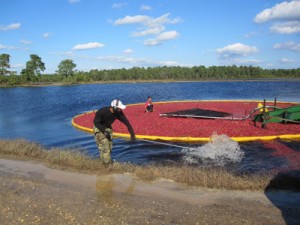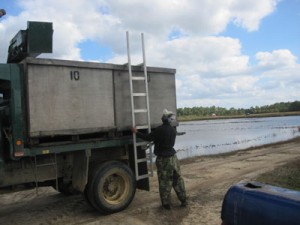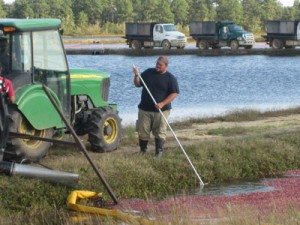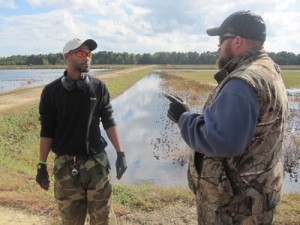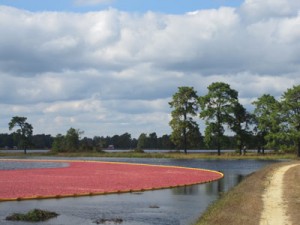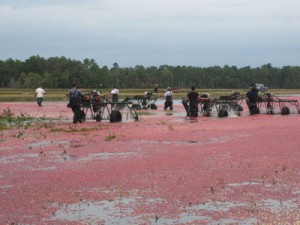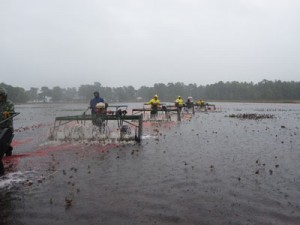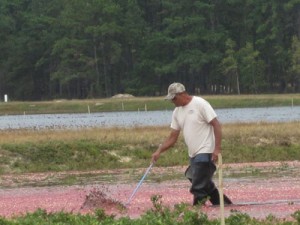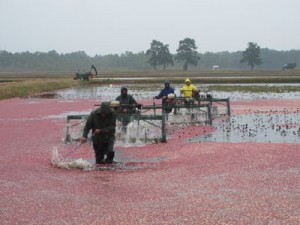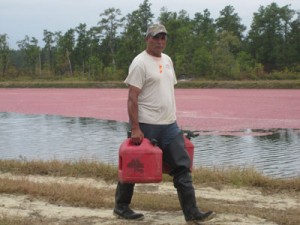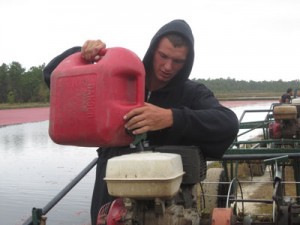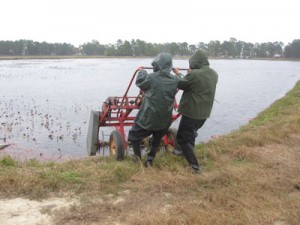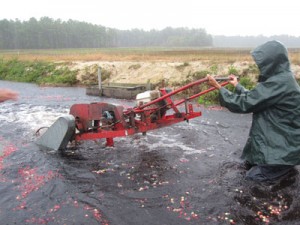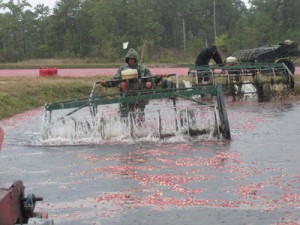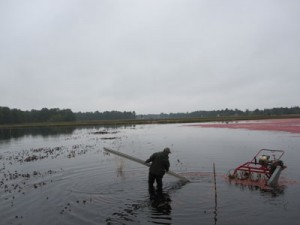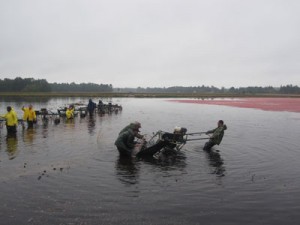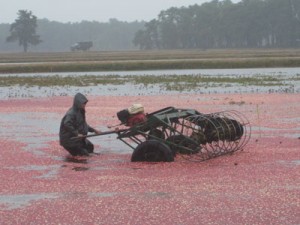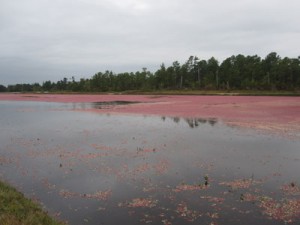Pine Island Cranberry was fortunate to have escaped Hurricane Sandy unscathed. We stored all of our tall equipment (elevators, et cetera) or sheltered it as best we could. Total rainfall over the course of the storm was only an average of 4.5 inches. Our team was out pulling all the boards and lowering all the reservoirs, so we had no flooding problems at all. There are some trees down, and we did use one lift pump in order to redirect some of the water and spread it out a little, but overall we “weathered” the storm and kept everything intact!
Considering our worries after Isaac, our harvest also turned out well. Overall, 48% of our acreage was affected, with 35% of our farm was under water and an additional 13% troubled by high flood waters moving through. Despite the worry, our teams finished on Saturday, working at top speed to get everything in, and brought in the third largest crop in the history of Pine Island Cranberry: almost 30 million pounds!
The three harvest crews did an amazing job: we had one new team leader and two new crew leaders learning on the job, and together with our more experienced leaders and team members finished the harvest in 35 days, averaging almost 40 acres a day! That’s in addition to all the time everyone put in during the storm as well as the massive cleanup effort afterward. Pine Island employees truly strive to do everything they do better every day, and the care and attention they show is extraordinary.
Pine Island Cranberry broke several personal records, in fact. 12 bogs on the main farm and 7 at Sim Place broke previous harvest records. Sim Place itself (even with 2 harvested bogs that had to be thrown out entirely and 84 acres under water for up to 72 hours after the Labor Day storm) harvested a record crop. 56% of our Sim Place property was under water after the storm, and yet we managed over 3.2 million pounds of cranberries brought in from Sim Place alone.
Nor were the knocking and gathering teams the only ones breaking records. This season, we had a record number of barrels delivered out of the packing house in one day: over 14,000 barrels, or 1.4 million pounds!
It has long been Bill’s central philosophy that at Pine Island Cranberry we are growers: it’s what we do and who we are. Our team members pride themselves on doing our best, never quitting, and loving what they do. And it is at times like this, at the end of a long, tough season, that we see what we are made of, what we have accomplished, and what we can accomplish moving forward. It’s how we work to become the best at what we do.

